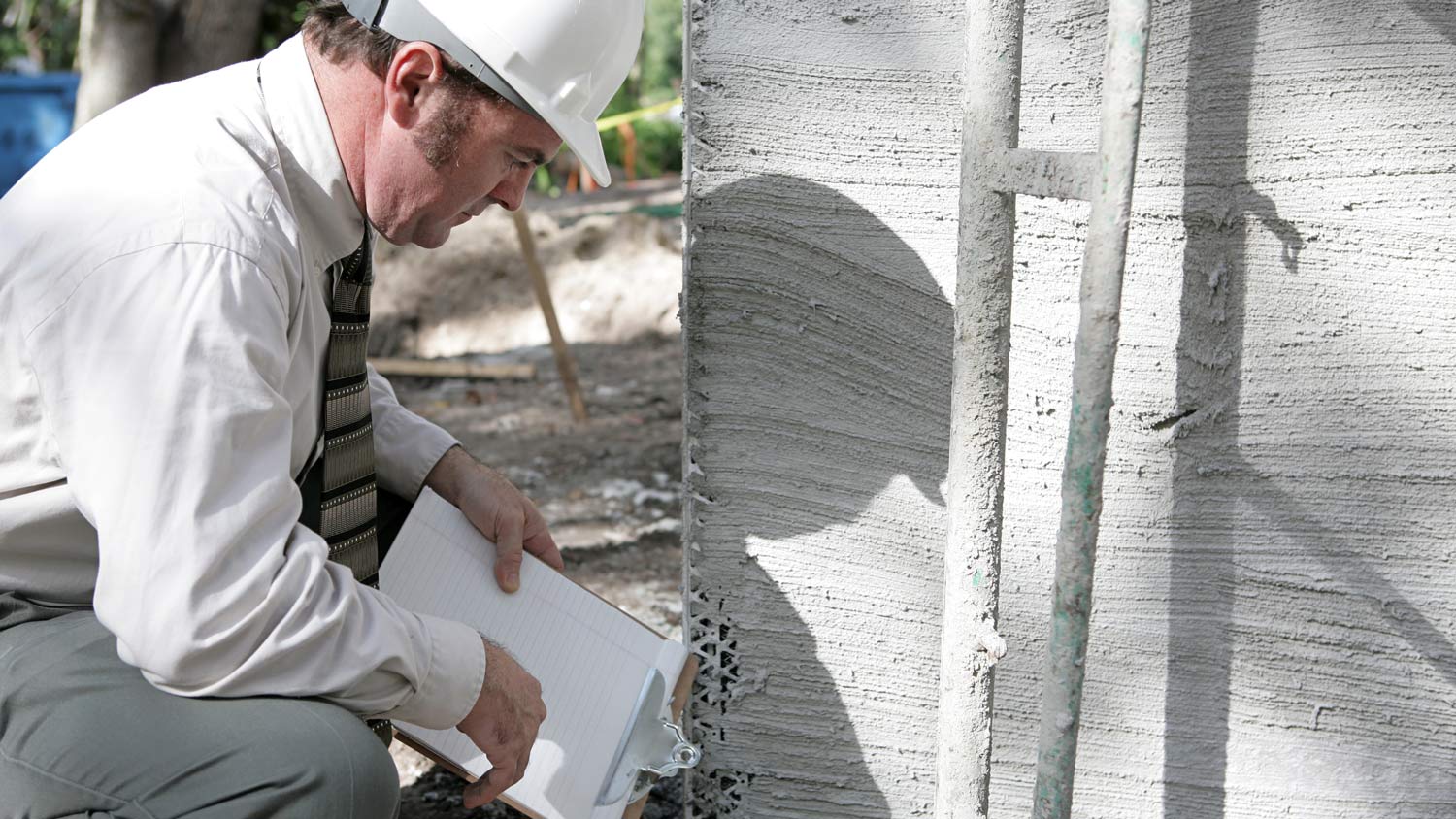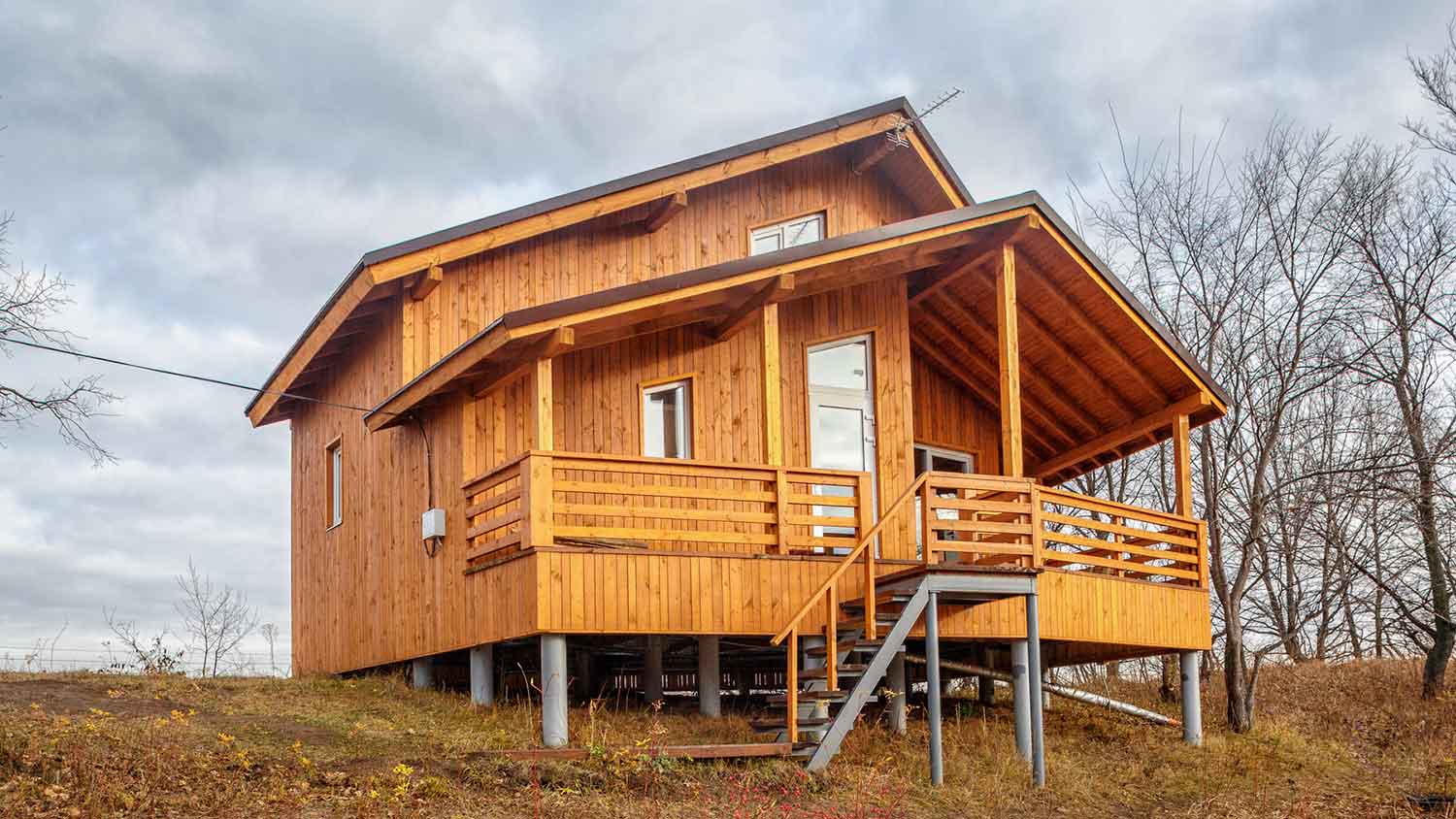4 Block Foundation Repair Methods to Make Sure Your House Stands Its Ground
Consult an expert and choose a reinforcement method


Damage to block foundations can be scary, especially if you’re just noticing it for the first time or if the cracks change direction or run several feet long. But don’t freak out. So long as you take the proper measures, which includes having a foundation expert come diagnose the issue, you can figure out what’s causing the problem and repair the block foundation accordingly.
Why It’s Important to Repair Your Block Foundation
Repairing your block foundation is an important task to complete. If you don’t, the problem will get worse over time and become more difficult and expensive to deal with. If you don’t repair your block foundation, you run the risk of sagging floors, water damage, mold, jammed doors and windows, and cracked walls. Even more serious than that, block foundations left unrepaired can lead to walls—or even the entire house— collapsing.
Of course, it’s important to know what foundation cracks to be concerned about, as they differ in severity. While smaller cracks should be monitored and can be repaired with sealant, repairing your entire cinder block foundation is its own feat.
Prepping to Repair Your Block Foundation

Getting a foundation inspection is necessary to prepare for repairing your block foundation. The inspection can give the professional insight into what specific issues your block foundation has and how to address them.
A proper block foundation inspection will also inform you about the specific foundation issues and their severity. The longer that block foundations in need of repair are left untreated, the higher the risk of severe structural damage, both to the foundation itself and other structural components of the house.
How to Repair a Block Foundation by Method
There are a handful of different foundation repair methods. The best choice for your repair project will be based on the severity of repairs needed, technical abilities, and budget.
Helical Tiebacks
Helical tiebacks are screw-like instruments that install in the soil next to your basement wall. Here’s how:
Drill the helical tiebacks horizontally through a small hole—no more than 12 inches in diameter—in your foundation wall.
Stop drilling once the helical tieback is drilled deep enough to experience resistance from the soil. This is typically at least 3 feet.
Secure the helical tiebacks with a wall plate/bracket.
More significant repairs to block foundations—like a bowed basement wall—could require a method such as helical tiebacks. The cost to fix a bowed basement wall or similarly significant issue with helical tiebacks is on the higher end. But this damage is necessary to resolve.
Wall Anchors
Wall anchors are two steel plates connected by a steel shaft. If your basement wall is bowing more than 2 inches, wall anchors are a good choice for block foundation repair.
Bury one of the steel plates in your yard about 10 feet away from the wall of the block foundation that needs to be repaired. Note that some excavation will be necessary to plant the steel plate in your yard.
Secure the other steel plate to your basement wall.
Drive the steel shaft through the steel plate in the block foundation wall until it is through the plate that is buried in the ground.
Carbon Fiber Straps
Carbon fiber straps are a less expensive option for cinder block foundation repair that also make more space in a basement compared to steel beams that protrude. This method does not require any excavation and can be done entirely from the inside.
Secure the carbon fiber straps to the foundation using epoxy sealant.
Install the anchors that come with the carbon fiber straps to the bottom and top of the block foundation wall you are repairing.
Epoxy Sealant
When it comes to more minimal issues with cinder block foundations, such as minor cracks with no water intrusion, you can use an epoxy sealant. Epoxy is a hardening adhesive that can be injected into foundation cracks through small ports using a syringe-like mechanism.
Prepare the surface of the foundation by removing any dampness or debris in the crack with a blow-dryer and shop vac or wire brush.
Mix the epoxy sealant according to the manufacturer instructions.
Use the sealer to attach the injection ports to the crack.
Spread the sealant across the crack with a wide knife.
Fill the cracks through the injection ports with the sealant using the syringe mechanism it comes with.
Seal up the injection ports.
Block Foundation Maintenance Tips
By properly maintaining your home’s block foundation, you can avoid shelling out for the cost of foundation repair and having to tackle more home projects. Here are a few tips to maintain your home’s foundation:
Waterproof it. Water damage can cause foundation issues down the road. By waterproofing your foundation, you can alleviate the risk of water intrusions. There are a variety of waterproofing options available, such as air and moisture barriers and roll-on waterproof sealings, which can be applied directly to the wall.
Pay attention. By keeping an eye out for cracks and other foundational issues, you will be prepared to step in when there’s a problem and mitigate further risks to your foundation or significant repairs.
Clean your gutters. By keeping your gutters free of debris, water will be redirected away from your foundation to avoid damage and ensure proper drainage.
Keep your home at a steady temperature. Fluctuations in your home’s temperature can cause your foundation to crack and expand. Keep your home’s temperature consistent throughout the year by consistently cleaning the air vents, turning on the AC fan when the air conditioner has finished its cycle, and insulating your attic and basement.
Install a root barrier. The roots of large trees can grow and expand significantly, causing damage to your home’s foundation. By installing a root barrier, you can prevent damage.
DIY vs. Hiring a Pro to Repair Your Block Foundation
While it is possible to repair a block foundation on your own, the severity of the issue and tools needed to repair it will determine whether it’s best to do it yourself or hire a professional.
If your cinder block foundation has small cracks—such as an eighth of an inch wide—that don’t threaten your home’s structural integrity, it is worth considering doing it on your own as it requires less equipment than larger cracks and foundational issues. While you can get away with picking up an epoxy sealant kit for smaller cracks, larger issues like a bowing foundation wall may require things such as drills or an excavator. Still, even for the smallest crack, you should ensure that you understand the materials you’re working with and take proper safety precautions.
If the foundation repair needed is more significant, most methods of repair require heavy-duty tools and professional training. You might want to consider finding a foundation repair service near you to ensure the job is done correctly and safely and to prevent any further issues.
Frequently Asked Questions
Yes, you can fix a block foundation. It’s important to address the issue immediately and have a foundation repair professional understand the severity of the issue and determine the best course of action. If the wall collapses before the foundation is repaired, then you’ll have to reassess your entire foundation.
Yes, you can replace a cinder block foundation. If a block foundation is too severely damaged to repair cracks and other issues, replacing the entire foundation is a viable option. The job will require a professional and can take between one to seven days on average to complete, depending on how complex the problem is.
Yes, it is normal for a block foundation to crack. Some block foundation cracks are more serious than others and indicative of a larger structural problem. On the other hand, minor cracks may not be of immediate concern but should be monitored. Regardless, foundational cracks are not an uncommon response to wear on a structure from time and weather.





- Your Guide to Dealing With Foundation Drain Issues
- 11 Warning Signs of Foundation Issues
- What a Foundation Inspection Is and How to Check Yours
- 10 Reasons You Really Shouldn't Delay Foundation Repairs
- Who to Call to Repair Foundation Issues
- How Long Does Foundation Repair Take?
- 20 Basement and Foundation Terms Every Homeowner Should Know
- How to Know When to Walk Away From Foundation Issues
- How to Fix Foundation Cracks: Your Guide to Identifying and Repairing Cracks by Type
- 11 Foundation Maintenance Tips to Keep Your Home Standing Strong










